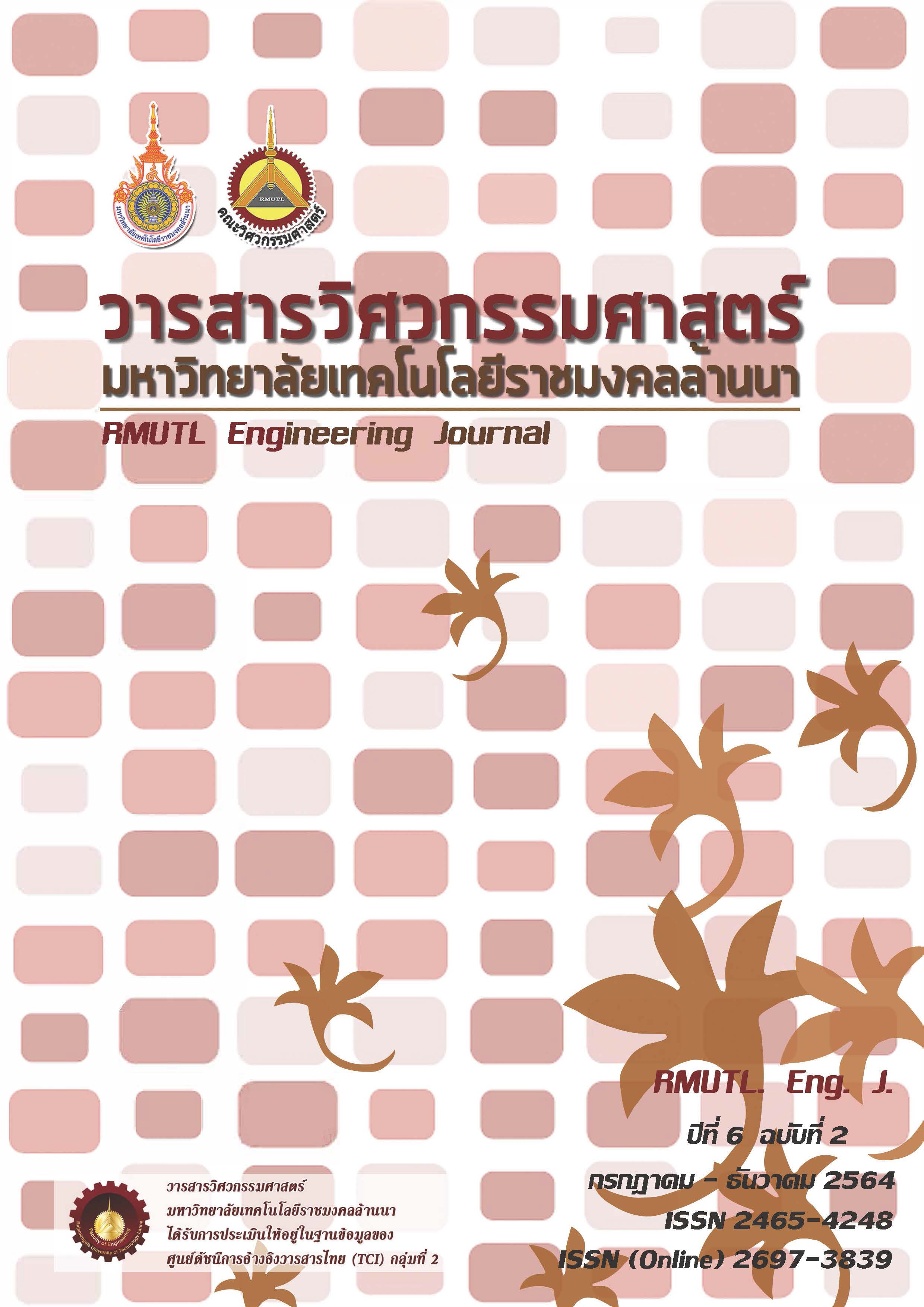Evaluation Performance of Furnace Casting Aluminum by Using Fuel Mixed Coke and Diesel
DOI:
https://doi.org/10.14456/rmutlengj.2021.10Keywords:
Furnace, Aluminum, Coke, Diesel fuelAbstract
This research aimed to evaluate the performance of aluminum casting furnace using coke and diesel fuel. The melting and casting of aluminum for engineering logo were tested by the lost foam method. The cylindrical roll steel furnace was constructed from mild steel. There was a slot for supplying air ducts and diesel fuel. The inner wall of the furnace was made from fire-resistant brick and plastered with fire-resistant cement for heat insulation. Another part was the base of the air blower fan and the diesel tank. The air blower fan was connected to the air ducts and diesel fuel. The mechanism of the furnace started with the formation of coke fuel to ignite around the inside of combustion chamber, drop the diesel oil into the air hose with an air blower fan and carry the oil into the combustion chamber of the furnace to produce heat and melt aluminum. The result of the aluminum casting test with weighs of 6 kg, the air blower fan speed of 3.50 m/s, oil flow rate of 21 min/liter, coke of 3.30 kg and diesel fuel of 2 liter showed that the furnace made the temperature of liquid aluminum up to 678 degrees Celsius with 110 minutes which was the minimum time compared to the test results at other wind speeds and the furnace has thermal efficiency equal to 5.61 percent.
References
opportunities. Journal of Manufacturing Processes. 2019;42:213-45.
[2] Supasin S, Chaitep S, Vittayapadung S. Compare thermal efficiency aluminum crucible furnace using lard oil share liquefied petroleum gas and diesel oil. Research Journal Kasalongkham. 2017; 11(3):317-326. Thai.
[3] Chusawat S. Design of laboratory crucible furnace by using oxygen-acetvlene gas. Available from: http://kb.psu.ac.th/psukb/handle/2553/2852 [Accessed 15th October
2018]. Thai.
[4] Trakulku K. Polymer Technology. Xpress Media Publishing, Bangkok; 1990. Thai.
[5] Panwar N, Chauhan A, Pali HS, Sharma MD. Fabrication of aluminum 6061 red-mud composite using stir casting and micro structure observation. Materials Today: Proceedings. 2020; 21: 2014–23.
[6] Srisomroeng P, Suebthet S, Sukyot T. Design and build a servo press for use in sheet metal forming. Industrial Engineering Network Conference Annual; 2012 Oct 17-19; Cha-am,
Phetchaburi; 2012. p. 256-259. Thai.
[7] Rezazadeh N, Hosseinzadeh H, Wu B. Effect of burners configuration on performance of heat treatment furnaces. International Journal of Heat and Mass Transfer. 2019;136: 799-807.
[8] Pugasa K, Yongcharoen W. Energy improvement of aluminum melting furnace employing bunker oil burner type. Journal of Energy Research. 2015; 12(1):1-15. Thai.
[9] Yunus AC. Heat transfer: a practical approach 2nd Edition. New Yorks: McGraw-Hill; 2013.
[10] Dhaneswara D, Fatriansyah JF, Ramadhan R, Ashari A. The effect of melting temperature aluminum metal casting using mixed degasser based sodium fluoride and sodium nitrate.
MATEC Web of Conferences. 2019;269:p. 07001.






